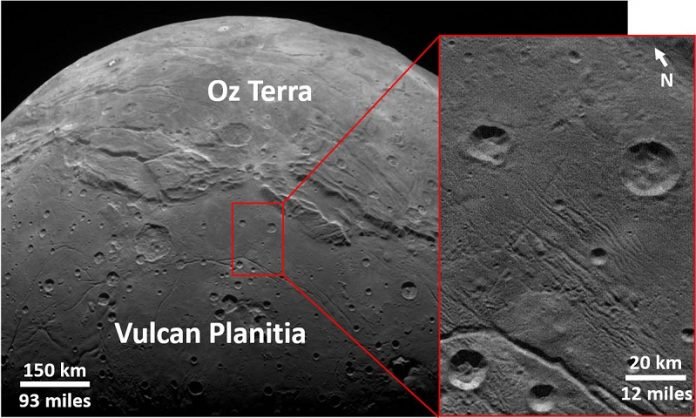
In a recent study, scientists found there were fewer small craters than expected on Pluto and Charon.
This implies that the Kuiper Belt may contain small numbers of objects.
It also suggests some of the Kuiper belt objects have been there since the formation of the Solar System
The Kuiper Belt is a donut-shaped region of icy bodies beyond the orbit of Neptune.
Because small Kuiper Belt objects were some of the “feedstock” from which planets formed, this research provides new insights into how the solar system originated.
According to the researchers, these smaller Kuiper Belt objects are much too small to really see with any telescopes at such a great distance.
New Horizons flies directly through the Kuiper Belt and collects data there. These activities were key to learning about both large and small bodies of the Belt.
This breakthrough discovery has deep implications. It revealed key details about the population of KBOs at scales we cannot come close to directly seeing from Earth.
Typical planetary models show that 4.6 billion years ago, the solar system formed from the gravitational collapse of a giant molecular cloud.
The Sun, the planets and other objects formed as materials within the collapsing cloud clumped together in a process known as accretion.
Different models result in different populations and locations of objects in the solar system.
However, this surprising lack of small KBOs changes scientists’ view of the Kuiper Belt.
It shows that either its formation or evolution or both were different than those of the asteroid belt between Mars and Jupiter.
It is possible that the asteroid belt has more small bodies than the Kuiper Belt.
This is because its population experiences more collisions that could break up larger objects into smaller ones.
Dr. Kelsi Singer is the paper’s lead author and a co-investigator of NASA’s New Horizons mission.
The mission’s principal investigator is Dr. Alan Stern.
The study was published in the March 1 issue of the journal Science.
The paper title is “Impact craters on Pluto and Charon indicate a deficit of small Kuiper Belt objects.”
Copyright © 2019 Knowridge Science Report. All rights reserved.
Further reading: Science.



